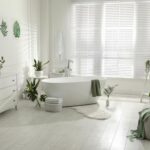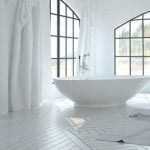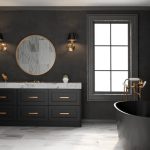How much should you spend on decorating your home? This is a common question that many homeowners ask themselves when undertaking the task of revamping their living space. Budgeting for home decor is essential to ensure that you don’t overspend and that you make the most of your resources. In this article, we will explore the different factors to consider when determining your home decorating budget, different approaches to calculating it, and tips for saving money without sacrificing style.
Setting realistic expectations for home decorating costs is crucial in ensuring that you don’t end up with a financial burden after sprucing up your home. Factors such as the size of your space, the quality of decor items, and whether you choose to hire professional services or go the DIY route all play a role in determining how much you should allocate for decorating your home.
When it comes to budgeting for home decor, there are various approaches that you can take. Some people prefer to set a fixed amount based on their overall finances, while others opt for a percentage of their home’s value.
Understanding these different methods can help you determine which one works best for your individual circumstances. Additionally, we will discuss how to prioritize spending on different rooms in your home and how to adjust your budget depending on whether you opt for DIY projects or professional services.
Setting Realistic Expectations for Home Decorating Costs
When it comes to decorating your home, setting a realistic budget is crucial. It’s important to consider not only the cost of furniture and decor but also any additional expenses that may come up during the decorating process. Here are some factors to consider when setting realistic expectations for home decorating costs:
1. Determine Your Total Budget: Before you start shopping for new decor, take a look at your overall financial situation and determine how much you can realistically afford to spend on decorating your home. This will give you a clear idea of what you have to work with and help prevent overspending.
2. Research Average Costs: Take the time to research the average costs of furniture, paint, flooring, and other home decor items. This will give you an idea of how much you should expect to spend on each item, allowing you to allocate your budget accordingly.
3. Consider Additional Expenses: In addition to the cost of furniture and decor, don’t forget to factor in any additional expenses such as shipping fees, installation costs, or hiring professional help for certain projects.
By considering these factors and setting a realistic budget for home decorating costs, you can ensure that you stay within your financial means while still achieving the look and feel you desire for your home.
Factors to Consider When Determining Your Home Decorating Budget
When it comes to decorating your home, one of the first things you need to consider is how much should you spend on decorating your home. Setting a realistic budget for your home decor is crucial as it will help you avoid overspending and getting into financial trouble. While there is no one-size-fits-all answer to this question, there are several factors to consider when determining your home decorating budget.
First, take a look at your overall financial situation. Consider your income, savings, and any existing debt before deciding on a budget for home decor. It’s important to be honest with yourself about what you can afford and not put yourself in a risky financial position just to have a beautifully decorated home.
Next, think about the specific needs and goals for each room in your home. Different rooms may require different levels of investment based on their function and importance to you. For example, you may want to prioritize spending more on the living room where you entertain guests, while being more frugal with the guest bedroom that is rarely used.
Lastly, consider the long-term value of the items you’re purchasing for your home. Investing in quality furniture, fixtures, and decor pieces may require a larger initial investment but can save money in the long run by lasting longer and requiring fewer replacements.
| Factors | Considerations |
|---|---|
| Financial Situation | Income, savings, existing debt |
| Room Priorities | Different levels of investment based on function and importance |
| Long-term Value | Investing in quality items for cost efficiency in the long run |
Different Approaches to Calculating Your Home Decorating Budget
When it comes to decorating your home, determining how much you should spend can be a daunting task. However, there are different approaches to calculating your home decorating budget that can help you make informed decisions and stay within your financial means.
Percentage of Home Value
One common approach to calculating your home decorating budget is to set aside a certain percentage of your home’s value for decor expenses. This method typically involves allocating 1-3% of your home’s total value towards decorating. For example, if your home is worth $300,000, you might consider setting aside $3,000 – $9,000 for decorating purposes. Keep in mind that this approach may not account for the specific needs or size of your living space.
Cost Per Square Foot
Another way to calculate your home decorating budget is by using a cost-per-square-foot estimate. This method involves determining a set amount of money per square foot of living space that you’re willing to spend on decor.
For instance, if you have a 2,000 square foot home and decide on a budget of $20 per square foot, you would allocate $40,000 for decorating. This approach can provide a more tailored budget based on the size of your home but may not consider the varying costs of decor items.
Needs vs. Wants Analysis
A more personalized approach to calculating your home decorating budget is by conducting a needs versus wants analysis. Consider prioritizing essential decor items such as furniture and storage solutions over non-essential items like decorative accessories or artwork. By identifying what is necessary for each room in your home, you can create a more targeted budget that aligns with practicality and personal style preferences.
By utilizing these different approaches to calculating your home decorating budget, you can gain insight into the most suitable method for your unique circumstances and ultimately determine how much you should spend on decorating your home.
Tips for Saving Money on Home Decor Without Sacrificing Style
When it comes to decorating your home, finding ways to save money without sacrificing style is essential. Here are some tips for staying within your budget while still creating a beautiful living space:
- DIY Projects: Consider taking on some do-it-yourself projects to save on costs. Whether it’s painting a piece of furniture, creating your own artwork, or making decorative accents, tackling DIY projects can help you save money on home decor.
- Second-Hand Shopping: Explore thrift stores, antique markets, and online marketplaces to find unique and affordable home decor items. You never know what hidden gems you might discover at a fraction of the cost of buying brand-new pieces.
- Sales and Discounts: Keep an eye out for sales, promotions, and discounts at home decor stores. Many retailers offer seasonal sales or clearance events, which can be a great opportunity to snag stylish pieces at discounted prices.
It’s important to remember that saving money on home decor doesn’t mean compromising on style. With some creativity and strategic shopping, you can adorn your living space with beautiful decor without breaking the bank.
Additionally, consider repurposing items you already own to give them new life in your home. A fresh coat of paint or reupholstering can transform old furniture into trendy statement pieces. By thinking outside the box and being resourceful, you can achieve a stylish look for less.
Lastly, don’t underestimate the power of simple yet impactful changes. Something as uncomplicated as rearranging furniture or adding inexpensive accessories like throw pillows or rugs can make a significant difference in the overall aesthetic of your home. By focusing on these small details and making savvy choices, you can elevate your living space without overspending.
Understanding the Value of Investing in Quality Home Decor
When it comes to decorating your home, the value of investing in quality home decor cannot be overstated. Quality home decor not only enhances the aesthetics of your living space but also contributes to the overall comfort and functionality of your home. But the question remains, how much should you spend on decorating your home with high-quality decor?
One important factor to consider when determining the value of investing in quality home decor is the longevity and durability of the items you purchase. While high-quality pieces may come with a higher price tag initially, they often outlast and outperform their cheaper counterparts, ultimately saving you money in the long run.
For example, a well-made sofa may cost more upfront, but it will maintain its shape and comfort for many years, whereas a cheaper alternative may need to be replaced sooner.
Another consideration is the impact that quality home decor can have on the overall design and atmosphere of your home. Investing in timeless, well-crafted pieces can elevate the look and feel of your space, creating a sense of luxury and sophistication that is difficult to achieve with lower-quality items.
In addition to considering the longevity and design impact of quality home decor, it’s also essential to assess your personal priorities and lifestyle. If entertaining guests is important to you, investing in high-quality dining furniture or stylish entertaining essentials might be worth prioritizing in your budget.
On the other hand, if relaxation and comfort are top priorities for you, allocating funds towards quality bedding or cozy seating options could be more valuable. By taking these factors into account, you can determine how much you should spend on decorating your home with quality decor that aligns with your specific needs and preferences.
| Factors to Consider | Value |
|---|---|
| Longevity/durability | Quality pieces outlast cheaper ones |
| Design impact/atmosphere | Elevates look and feel of space |
| Personal priorities/lifestyle | Determines specific needs/preferences |
How to Prioritize Spending on Different Rooms in Your Home
When it comes to decorating your home, prioritizing spending on different rooms is an important aspect of budgeting. Each room in your home serves a different purpose and may require varying amounts of investment to achieve the desired look and functionality. Here are some tips on how to prioritize your spending on different rooms in your home:
Determine the Function of Each Room
Before allocating a budget for each room, it’s essential to determine the function of each space. For example, the living room may be the central gathering area for entertaining guests, while the bedroom is a more private and personal space for relaxation. Understanding the primary function of each room will help you decide how much to invest in its decor.
Identify High-Traffic Areas
Rooms that experience high foot traffic, such as the entryway, kitchen, and bathroom, may require more frequent maintenance and updates. Investing in durable materials and practical furnishings for these areas can help them withstand daily wear and tear, saving you money in the long run.
Consider Your Lifestyle and Preferences
Your lifestyle and personal preferences play a significant role in determining where to allocate your decorating budget. If you love to cook and spend a lot of time in the kitchen, it may be worth investing in high-quality appliances or upgrading the layout for better functionality. Similarly, if you enjoy unwinding in a cozy living room, allocating funds for comfortable seating or lighting fixtures would be beneficial.
By considering these factors when prioritizing spending on different rooms in your home, you can create a balanced and realistic budget that meets your needs while staying within your financial means.
Adjusting Your Home Decorating Budget for DIY Projects vs Professional Services
In conclusion, determining how much you should spend on decorating your home is a personal decision that requires careful consideration of your budget, priorities, and goals for your living space. Budgeting for home decor is essential to ensure that you don’t overspend and to set realistic expectations for the costs involved.
By taking the time to evaluate your needs and preferences, you can develop a budget that reflects your financial situation and allows you to achieve the look and feel you desire for your home.
When considering DIY projects versus professional services, it’s important to weigh the pros and cons of each option. DIY projects can be cost-effective and provide a sense of accomplishment, but they also require time, skills, and resources. On the other hand, hiring professional services may entail higher costs but can offer expertise, convenience, and quality results. It’s crucial to assess your capabilities and resources before deciding which approach aligns with your budget and vision for your home.
Ultimately, finding a balance between cost-effectiveness and achieving your desired look is key when it comes to decorating your home. By setting realistic expectations, considering various factors that influence your budget, and exploring different approaches to calculating your spending, you can create a customized plan that suits your needs while staying within your financial means. With careful planning and thoughtful decision-making, you can transform your living space into a stylish and comfortable haven without breaking the bank.
Frequently Asked Questions
What Is a Reasonable Budget for Interior Design?
A reasonable budget for interior design can vary depending on the size of the project and the scope of work. It’s important to consider the cost of materials, furniture, labor, and any additional expenses like professional fees. Setting a budget that aligns with your goals and financial capacity is crucial for a successful interior design project.
Why Is Home Decor So Expensive?
Home decor can be expensive due to various factors such as the quality of materials, craftsmanship, and brand reputation. Custom or handcrafted items also tend to come with a higher price tag. Additionally, the demand for certain trendy or designer pieces can drive up their cost in the market.
Who Spends the Most on Home Decor?
Typically, people who have higher disposable incomes tend to spend more on home decor. This could include homeowners in affluent neighborhoods or those with higher socioeconomic status. Additionally, individuals who prioritize home aesthetics and invest in regular updates to their living spaces may also fall into this category of high spenders on home decor.

I’m thrilled to be your companion on this exciting journey through the world of home decor and design. With a passion for turning houses into homes and a keen eye for the finer details, I’m here to help you transform your living spaces into beautiful, functional, and meaningful havens.





